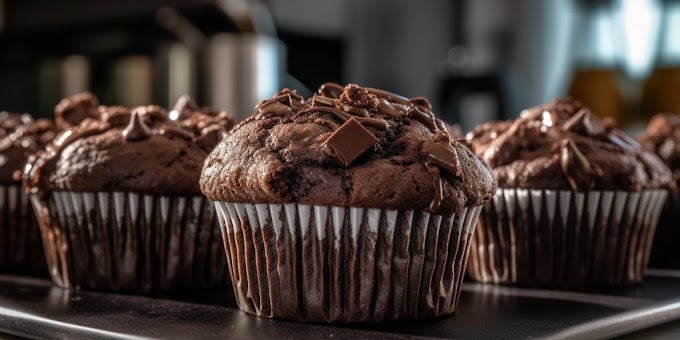The Importance of Proper Cake Storage
A cake is a delicate creation. It can easily dry out, absorb unwanted odors, or become soggy if not stored correctly. Proper storage ensures that your cake remains as moist, flavorful, and aesthetically pleasing as when it first came out of the oven. The key factors to consider when storing a cake overnight include:
Moisture Retention: Preventing the cake from drying out.
Protection from Odors: Avoiding the absorption of other smells from the kitchen or refrigerator.
Temperature Control: Maintaining an appropriate temperature to keep the cake fresh.
Protection from Contamination: Ensuring that the cake is kept in a clean environment, free from bacteria and other contaminants.
Let’s delve into the specifics of how to achieve these goals.
1. Cooling the Cake Properly
Before you can store your cake, it needs to cool down completely. Storing a warm cake can lead to condensation, which may cause the cake to become soggy. Here’s how to cool your cake properly:
Leave the Cake in the Pan: After removing the cake from the oven, allow it to cool in the pan for 10-15 minutes. This helps the cake firm up slightly and makes it easier to remove from the pan without breaking.
Transfer to a Cooling Rack: After the initial cooling period, carefully transfer the cake to a cooling rack. This allows air to circulate around the cake, preventing the bottom from becoming soggy.
Avoid Covering the Cake: Resist the temptation to cover the cake while it’s still warm. Covering a warm cake can trap steam, leading to moisture build-up and a soggy texture.
2. Wrapping the Cake for Storage
Once the cake is completely cooled, it’s time to wrap it for storage. The way you wrap your cake will depend on whether it’s frosted or unfrosted.
Storing Unfrosted Cakes
Unfrosted cakes are easier to store since there’s no frosting to worry about. Here’s how to wrap them:
Plastic Wrap: Wrap the cake tightly in plastic wrap. Ensure that every part of the cake is covered to prevent exposure to air, which can cause the cake to dry out.
Aluminum Foil: For an extra layer of protection, wrap the plastic-wrapped cake in aluminum foil. This helps prevent any odors from seeping in and also adds a layer of insulation.
Airtight Container: If you prefer, you can place the wrapped cake in an airtight container. This is especially useful if you plan to store the cake for more than one night.
Storing Frosted Cakes
Frosted cakes require a bit more care, as the frosting can be easily damaged. Here’s how to store a frosted cake:
Refrigeration (Optional): If your frosting contains perishable ingredients like cream cheese or fresh fruit, it’s best to store the cake in the refrigerator. However, refrigeration can cause the cake to dry out, so follow these steps carefully.
Plastic Wrap: If possible, place the cake in the refrigerator for 15-20 minutes to allow the frosting to firm up. Once the frosting is firm, wrap the cake loosely with plastic wrap. Avoid pressing the wrap against the cake to prevent smudging the frosting.
Cake Dome or Box: For added protection, place the wrapped cake inside a cake dome or box. This will shield the frosting and help maintain the cake’s shape.
Room Temperature (For Non-Perishable Frosting): If the frosting doesn’t contain perishable ingredients, you can store the cake at room temperature. Simply cover it with a cake dome or a large bowl to protect it from dust and debris.
3. Storing Cake Layers
If you’ve baked multiple cake layers and plan to assemble them the next day, proper storage is crucial to maintaining their moisture and shape. Here’s how to store cake layers overnight:
Plastic Wrap: Wrap each cake layer individually in plastic wrap. Ensure that the wrap is snug but not too tight, as this could cause the layers to become compressed.
Refrigeration (Optional): If you prefer, you can refrigerate the wrapped layers. However, keep in mind that refrigeration can cause the cake to dry out, so you may want to avoid this unless absolutely necessary.
Freezing (For Longer Storage): If you need to store the layers for more than a day, consider freezing them. Wrap the layers in plastic wrap, followed by a layer of aluminum foil, and place them in the freezer. When you’re ready to use them, allow the layers to thaw at room temperature while still wrapped.
4. Storing Specialty Cakes
Certain types of cakes require special attention when it comes to storage. Here’s how to handle some common specialty cakes:
Storing Cheesecake
Cheesecake should always be stored in the refrigerator due to its perishable ingredients. Wrap the cheesecake tightly in plastic wrap and place it in an airtight container to prevent it from absorbing any odors from the refrigerator. Cheesecake can also be frozen for longer storage.
Storing Pound Cake
Pound cakes are dense and can dry out quickly if not stored properly. Wrap the pound cake in plastic wrap and then in aluminum foil to retain moisture. Store it at room temperature, and it should stay fresh for several days.
Storing Angel Food Cake
Angel food cakes are light and airy, making them prone to drying out. Store the cake in an airtight container at room temperature. If you’ve cut into the cake, place a piece of plastic wrap against the cut surface to prevent it from drying out.
5. Tips for Serving the Cake the Next Day
When it’s time to serve your cake, there are a few tips to ensure it’s as fresh as possible:
Bring to Room Temperature: If you’ve stored the cake in the refrigerator, allow it to come to room temperature before serving. This helps to restore the cake’s softness and enhances the flavor.
Refrigerate Again if Necessary: If there are leftovers after serving, wrap them up and refrigerate them promptly. This helps to maintain freshness for a few more days.
Conclusion
Storing a freshly baked cake overnight doesn’t have to be complicated. By following these steps, you can ensure that your cake remains moist, flavorful, and ready to impress your guests the next day. Whether you’re dealing with an unfrosted cake, a delicately frosted masterpiece, or a specialty cake, proper storage techniques will keep your creation in perfect condition. Enjoy your baking success, and happy storing!








Social Plugin